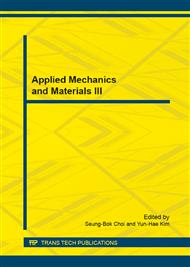p.336
p.341
p.345
p.349
p.353
p.358
p.364
p.368
p.372
Application of Interface Element in Dynamic Analysis of CFRD
Abstract:
By introducing joint element with thickness, the joint element with thickness and non-thickness element were used to simulate the contact relationship between the concrete face and cushion and joints, for a certain CFRD for the three dimensional nonlinear finite element static and dynamic calculation and analysis. The results show that: using joint element with thickness is a good way to simulate the contact relationship between the concrete face and cushion, improve panel stress; Compared with non-thickness element, joint element with thickness can improve the dynamic stress of the CFRD better.
Info:
Periodical:
Pages:
353-357
Citation:
Online since:
January 2015
Authors:
Price:
Сopyright:
© 2015 Trans Tech Publications Ltd. All Rights Reserved
Share:
Citation:


